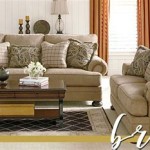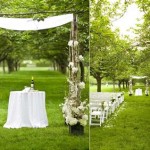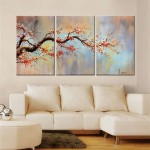Samples of Decorative Designs: A Comprehensive Exploration
Decorative designs are integral to human expression, reflecting cultural values, aesthetic preferences, and technological advancements. They permeate various aspects of life, from architecture and interior design to textiles, product design, and graphic arts. This article presents an overview of diverse decorative design samples, encompassing historical styles, contemporary trends, and fundamental design principles.
Historical Decorative Styles
Throughout history, different eras and cultures have developed distinct decorative styles, each characterized by unique motifs, techniques, and materials. Understanding these historical styles provides valuable insights into the evolution of design and offers inspiration for contemporary applications.
Ancient Egyptian Decorative Design: Characterized by symbolism and religious significance, Ancient Egyptian decorative design features hieroglyphs, geometric patterns, and stylized representations of nature. Common motifs include the lotus flower, papyrus reeds, the scarab beetle, and the Eye of Horus. These designs were often used in tombs, temples, and furniture, constructed using materials such as stone, wood, and faience. The use of vibrant colors, notably red, blue, green, and gold, further enhanced the visual impact of these decorations. The emphasis was on order, balance, and repetition, reflecting the Egyptians' belief in the importance of stability and harmony.
Classical Greek Decorative Design: Greek decorative design, prominent from around the 8th century BC, is characterized by its emphasis on proportion, harmony, and geometric precision. Key elements include the use of classical orders (Doric, Ionic, and Corinthian) in architecture, along with motifs such as the meander (a continuous line pattern), acanthus leaves, and human figures depicted with idealized proportions. Greek pottery, known for its black-figure and red-figure techniques, showcased intricate scenes from mythology and daily life, providing valuable insights into the culture of the time. Materials used included marble, terracotta, and bronze. The focus was on creating designs that were both aesthetically pleasing and intellectually stimulating, reflecting the Greek pursuit of beauty and knowledge.
Roman Decorative Design: Roman decorative design built upon the foundations laid by the Greeks, incorporating elements of other cultures they encountered. Roman architecture features grand structures adorned with arches, vaults, and domes. Interior spaces were lavishly decorated with frescoes, mosaics, and stucco reliefs illustrating mythological scenes, landscapes, and portraits. The Romans also employed marble extensively for sculptures, columns, and paneling. Common motifs included scrolls, garlands, and acanthus leaves, similar to the Greek aesthetic, but often applied with a greater emphasis on opulence and realism. Roman decorative design reflected the empire's power, wealth, and ambition, showcasing technical mastery and a desire to impress.
Byzantine Decorative Design: The Byzantine Empire, a continuation of the Roman Empire in the East, developed a unique decorative style characterized by its religious themes, opulent materials, and intricate craftsmanship. Mosaics, utilizing small pieces of colored glass and stone (tesserae), were a hallmark of Byzantine art, adorning the walls and ceilings of churches with depictions of Christ, the Virgin Mary, and various saints. The use of gold leaf added to the richness and luminosity of these decorations. Byzantine textiles, often made of silk and embroidered with gold and silver thread, were highly prized. Geometric patterns and stylized floral motifs were also prevalent. Byzantine decorative design served to glorify God and emphasize the spiritual authority of the emperor.
Gothic Decorative Design: Originating in medieval Europe, Gothic decorative design is characterized by its soaring verticality, pointed arches, and stained glass windows. Gothic cathedrals were designed to inspire awe and reverence, with intricate stone carvings, ribbed vaults, and flying buttresses. Stained glass windows, depicting biblical scenes and saints, flooded the interiors with colored light. Furniture and other decorative objects featured elaborate carvings and ornamentation including trefoils, quatrefoils, and crockets. Emphasis was placed on creating spaces that reflected the divine order and transported the viewer to a higher realm. The use of light and color played a crucial role in enhancing the spiritual atmosphere.
Renaissance Decorative Design: The Renaissance, marking a revival of classical learning and artistic styles, saw a renewed interest in proportion, balance, and humanism. Renaissance decorative design incorporated elements from ancient Greek and Roman art, such as columns, pilasters, pediments, and classical motifs. Frescoes, depicting mythological scenes and portraits, adorned the walls of palaces and villas. Furniture, often made of walnut and inlaid with precious materials, featured elegant lines and refined ornamentation. The use of perspective and realistic representation of the human form were key characteristics. Renaissance decorative design celebrated beauty, learning, and the potential of human achievement.
Baroque Decorative Design: Baroque decorative design, prominent in the 17th and 18th centuries, is characterized by its drama, grandeur, and opulent ornamentation. Baroque architecture features curved lines, elaborate moldings, and dramatic lighting effects. Interiors were lavishly decorated with stucco, gilding, and rich fabrics. Furniture was heavily ornamented with carvings, inlays, and veneers. Emphasis was placed on creating a sense of movement, depth, and theatricality. Baroque decorative design reflected the power and wealth of the aristocracy and the Catholic Church.
Art Nouveau Decorative Design: Art Nouveau, a late 19th and early 20th-century style, is characterized by its organic forms, flowing lines, and asymmetrical compositions. Inspired by nature, Art Nouveau designs often feature floral motifs, tendrils, and insects. Artists working in this style embraced new materials and techniques, such as ironwork, glassmaking, and ceramics. Art Nouveau designs can be found in architecture, furniture, jewelry, graphic arts, and other decorative objects. The style aimed to create a sense of beauty and harmony through the integration of art and life.
Art Deco Decorative Design: Art Deco, emerging in the 1920s and 1930s, is characterized by its geometric shapes, streamlined forms, and luxurious materials. Art Deco designs often feature zigzags, chevrons, and sunburst patterns. Influenced by modern technology and industrial design, Art Deco embraced new materials such as chrome, glass, and plastics. Art Deco designs can be found in architecture, furniture, fashion, and graphic arts. The style reflected optimism, glamour, and a belief in the power of progress.
Contemporary Decorative Design Trends
Contemporary decorative design is influenced by a variety of factors, including technological advancements, social trends, and environmental concerns. Several key trends are shaping the landscape of modern decorative design.
Minimalism: Emphasizing simplicity and functionality, minimalism focuses on clean lines, neutral colors, and a reduction of clutter. Minimalist interiors are often characterized by open spaces, natural light, and a limited number of carefully selected objects. This trend reflects a desire for calm, order, and a focus on essential elements.
Biophilic Design: Biophilic design incorporates natural elements and principles into the built environment, promoting a connection with nature. This can include the use of natural materials, such as wood, stone, and bamboo, as well as the incorporation of plants, natural light, and views of nature. Biophilic design aims to improve human well-being by fostering a sense of connection with the natural world.
Sustainability: Growing environmental awareness has led to an increased demand for sustainable decorative designs. This includes the use of recycled and reclaimed materials, eco-friendly finishes, and energy-efficient lighting and appliances. Sustainable design aims to minimize environmental impact and promote responsible consumption.
Bold Colors and Patterns: In contrast to minimalism, some contemporary designs embrace bold colors and patterns. This can include the use of vibrant hues, geometric patterns, and expressive textures. This trend reflects a desire for individuality, creativity, and a playful approach to design.
Technology Integration: Technology is increasingly integrated into decorative design, with smart lighting, automated window coverings, and interactive displays becoming more common. Technology can enhance functionality, convenience, and aesthetic appeal.
Fundamental Design Principles
Regardless of the specific style or trend, all successful decorative designs adhere to fundamental design principles. These principles provide a framework for creating visually appealing, functional, and harmonious spaces.
Balance: Balance refers to the distribution of visual weight within a design. Symmetrical balance creates a sense of formality and order, while asymmetrical balance creates a sense of dynamism and informality. Achieving balance is essential for creating a visually pleasing composition.
Proportion: Proportion refers to the relationship between different elements within a design. Achieving harmonious proportions is crucial for creating a sense of visual coherence and balance. This principle often involves applying mathematical ratios, such as the golden ratio, to create aesthetically pleasing relationships between different elements.
Contrast: Contrast refers to the difference between different elements within a design. Contrast can be achieved through the use of different colors, textures, shapes, and sizes. Effective use of contrast can create visual interest, highlight key elements, and add depth to a design.
Rhythm: Rhythm refers to the repetition or variation of elements within a design. Rhythm can create a sense of movement, flow, and harmony. Different types of rhythm include regular rhythm, alternating rhythm, and progressive rhythm.
Emphasis: Emphasis refers to the creation of a focal point within a design. A focal point is the element that draws the viewer's attention and creates a sense of visual hierarchy. Emphasis can be achieved through the use of color, shape, size, or placement.
Unity: Unity refers to the overall coherence and harmony of a design. A unified design is one in which all the elements work together to create a cohesive and visually pleasing whole. Achieving unity requires careful consideration of all the design principles.
By understanding historical styles, contemporary trends, and fundamental design principles, designers can create effective and visually compelling decorative designs that enhance the built environment and enrich human experience. The ongoing evolution of decorative design reflects the dynamic interplay between culture, technology, and artistic expression.

Free Vector Samples Floral Tech Shapes And Tribal Designs

Interior Design Decorative Samples Free Stock Photo

Page 24 Vintage Decorative Designs Images Free On Freepik

Decorative Design Elements Elegant Classical Symmetric Curves Vectors Images Graphic Art Designs In Editable Ai Eps Svg Cdr Format Free And Easy Unlimit Id 6840662

Interior Design Styles 101 The Ultimate Guide To Decorating In 2025 Decorilla

Decorative Design Elements Rule Lines Stock Ilration 46003078 Shutterstock

Table Of Samples Various Images Decorative Leaves In The Russian National Gorodets Pa
/wall-murals-abstract-decorative-design.jpg.jpg?strip=all)
Wall Mural Abstract Decorative Design Pixers Us

Page 3 Decorative Samples Vectors Free High Quality From Freepik

Decorative Object Wallpaper Sample Of A Morris Co Design Fleur De Lys







